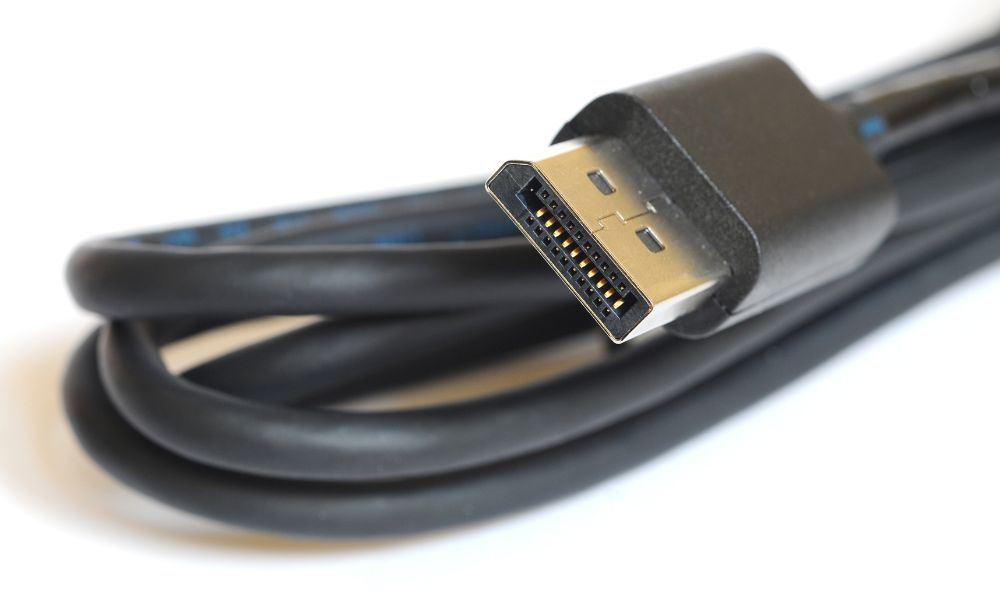
DisplayPort cables transmit high-quality digital video and audio signals. However, with the changing requirements of the modern workplace, you may need to run DisplayPort cables over long distances. Understanding how far DisplayPort cables run may affect their effectiveness.
Understanding DisplayPort Cable Length Limitations
A DisplayPort cable transmits a high-quality digital signal up to 50 feet, but this length varies depending on the quality and version of the cable. High-quality cords can transmit over greater lengths.
If you wish to exceed this length, you will need active DisplayPort cables with a built-in amplifier to transmit signals over much longer distances. Keep in mind that active DisplayPort cables are more expensive than passive cables, and the price may indicate how far the DisplayPort cable may run.
Keeping Signal Integrity With DisplayPort Cables
DisplayPort cables can suffer signal degradation as they get longer. The signal may experience losses from inefficient conductors or external interference as it travels through a DisplayPort cable. Use repeaters or signal boosters to secure signal integrity. These gadgets redirect and shape some of the signal’s energy in order to protect it.
Other Ways To Improve Transmission Quality
When running a cable over long distances, the span between devices can weaken a DisplayPort cable’s strength. Luckily, armored DisplayPort cables protect the signal against electromagnetic interference. If you want to extend the length of the cord, DisplayPort cable adapters may come in handy. They can break up the signal into manageable parts over long distances.
Choosing an Optimal DisplayPort Cable
A lengthy DisplayPort cable with shielding can establish stable transmissions for uncorrupted and adequate signals.
Pro Tip: Verify that the cable is compatible with the version of DisplayPort you’re using. DisplayPort 2.0 or 2.1 are extraordinary and deliver resolutions of up to 8K!
Choose a long DisplayPort cable for future network expansion, but avoid excessively long cables that could lead to signal degradation.
Although the ideal distance for a DisplayPort cable depends on various factors, you can create a stable signal using this technology! When purchasing DisplayPort cables, ensure the DisplayPort versions are compatible with your equipment. With these tips, you’ll be able to carry out long-distance DisplayPort transmissions!



